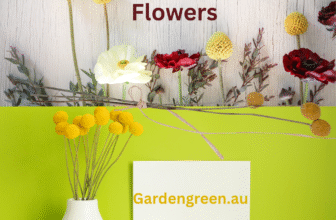Nowadays, choosing the best pet turf for your dogs can be overwhelming, as there are so many options available on the market.
This guide is here to make things easier! We’ll walk you through the pros and cons of natural grass versus pet turf and explore the different features of various artificial grass types.
By the end, you’ll have all the information you need to confidently pick the best turf for your yard.
Get ready to be inspired by this comprehensive guide. Gardengreen’s experts will disclose top ideas for selecting the finest dog artificial grass, which will resolve your mess and comfort your favorite pet.
Major types of Pet Turfs:
Durable Dog Turf
This type is made tough to handle, including digging, running, and active dogs. It has a strong backing and thick blades, so it stays in place and looks great even with daily use. If you’ve got a playful pet, this is one of the best pet turf for dogs in Aussie backyards.
2. Heat-Resistant Turf
Australia can get hot, and some types of artificial grass heat up quickly. Heat-resistant turf stays cooler under the sun, making it safer and more comfortable for your furry friend. It’s a wise choice if you’re after the best pet turf for dogs in warm climates like Perth or Brisbane.
3. Soft and Natural-Looking Grass
Some dog owners prefer turf that looks and feels like the real thing. This type is soft under paws and blends well with natural lawns. It’s perfect for smaller dogs or calm pets. It’s not just beautiful—it’s also one of the best pet turf for dogs if comfort matters most.
4. Turf with Drainage Layers
This turf has a special design that drains water and dog wee quickly. No puddles, no bad smells! If you’re looking for the best pet turf for dogs that’s low-maintenance and easy to clean, drainage turf is a top pick for Aussie homes.
5. Cooling Pet Turf
This type is made with cooling technology that reflects sunlight and stays cooler. It’s perfect for pets who love to lie outside. In hotter Australian areas, this is one of the best pet turfs for keeping dogs’ paws safe and happy.
Installation of Pet Turf
If you want to learn more about artificial dog grass, click here. We linked a detailed article here.
Gardengreen researched for you. Click below.
Here is our a detailed blog on Altimate Guide Artificial grass/Turf in Australia
Click to learn about Dog Artificial Grass, a Comprehensive guide for every pet lover.
Want to get more clicks here Dog Artificial Grass, An Ultimate Guide
Here is another massive work: Types of Artificial Grass: A Complete Comparison Guide to Features and Benefits
Best Artificial Grass for Dogs: Finding the Best Option 2025
Gardengreen.au offers Pet Turf: How to Choose the Best Artificial Grass for Your Dogs.
How to Install Artificial Grass: A Step-by-Step Guide vs Professional Installation
How to Transform Your Lawn or Balcony with the Best Artificial Grass, Australia 2025 Tips
Faux Turf
Artificial Grass Lawn Rolls
How to pick the Best Artificial grass
1. Do Your Research
Artificial turf has clear advantages over natural grass for pets.
FAQs
Frequently Asked Questions and Answers
What is turf filled with?
Turf is typically filled with infill materials like silica sand, rubber, or a pet-friendly antimicrobial infill to provide cushioning, stability, and drainage.
Does turf have bacteria?
Yes, like any outdoor surface, turf can accumulate bacteria. However, pet-friendly artificial turf often includes antimicrobial treatments, and regular cleaning helps maintain hygiene.
What is the difference between pet turf and artificial turf?
The best pet turf for dogs is specifically designed for animals, featuring superior drainage, odor control, and antimicrobial infill. In contrast, standard artificial grass may not have these pet-specific features.
How do you clean pet turf for Dogs?
Cleaning the best pet turf for dogs involves rinsing it with water, using a pet-safe turf deodorizer, and occasionally brushing it to prevent matting and odors.
Does pet turf get too hot for dogs?
Yes, artificial turf can get warm in direct sunlight. Choosing turf with heat-resistant technology, providing shaded areas, or watering it can help keep it cool for pets.
Is pet turf safe for dogs to chew on?
High-quality pet turf is made from non-toxic materials, but dogs should still be supervised to prevent them from chewing or ingesting the infill.





